Picture a dollhouse – a colorful exterior, several stories high, gabled roof, highly decorative details, maybe even a tower – and you’ve just envisioned a Victorian style home. From their iconic exteriors, to their opulent interiors fit for a queen, Victorian houses are a unique home style that stands out from the rest.
Whether you’re looking to buy your first home or are fascinated by the popular house styles across the US, a Victorian home should be on your list of must-sees. Find out what makes this style unique and the history that has let these homes stand the test of time.
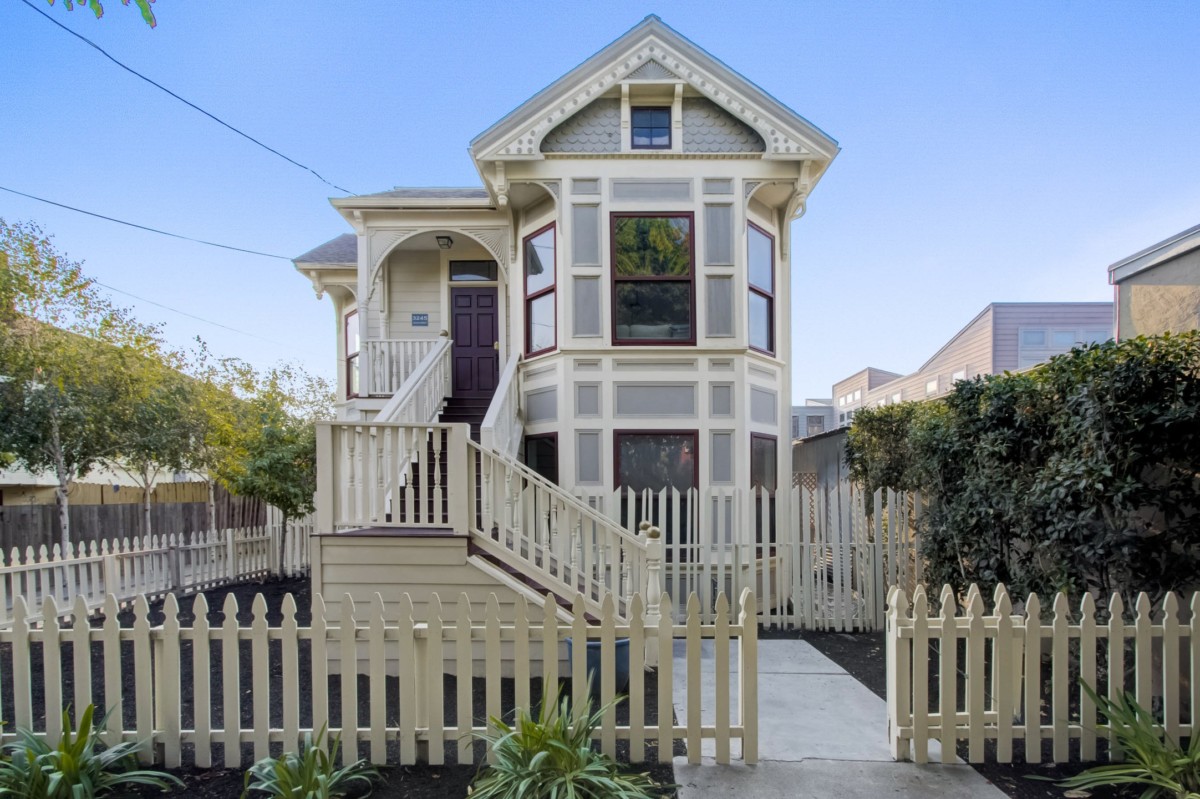
What is a Victorian style house?
Unlike other homes, Victorian style houses are not a singular style of home. Victorian often refers to the era of 1837-1901 and Queen Victoria’s reign over Great Britain and the British colonies. Victorian style homes take inspiration from a variety of different architectural movements, with each putting its own unique stamp on the typical Victorian era house.
History of the Victorian houses
Victorian houses became popular from 1837 to 1901, coinciding with the Industrial Revolution. As new building materials became widely available, builders were able to take a different approach to home design. Mass production aided home builders in adding architectural details like intricate metalwork and decorative woodwork throughout homes. While the Victorian home style originated in England, it quickly made its way to many other countries, including the US.
Where are Victorian houses located?
Victorian houses are found in many cities across the country. By far, the city with the most well-known Victorian style homes is San Francisco, CA. From Alamo Square’s “Painted Ladies,” to Pacific Heights and Bernal Heights, you can find Victorian homes in just about every neighborhood in San Francisco. Victorian homes are also popular in cities like Louisville, KY, New Orleans, LA, St. Louis, MO, Cape May, NJ, and Seattle, WA, but with a little luck, you can find these homes in nearly every major housing market in the US.
Victorian house characteristics
While Victorian houses have many different architectural styles, there are common features you can find among them. These interior and exterior features help tie Victorian era homes together, making them easily identifiable from other home styles.
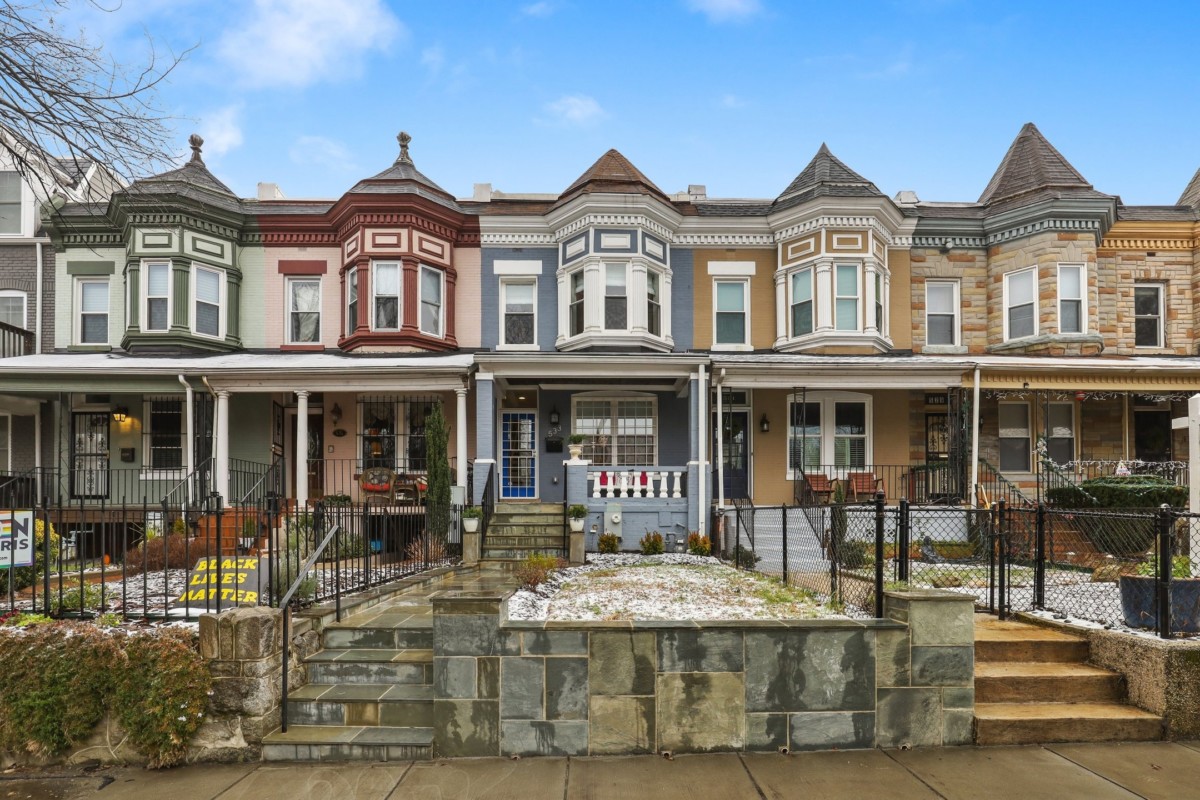
Victorian house exterior features
Brightly colored exteriors: A recognizable feature of most Victorian homes is the colored façade. Whether pastel-colored or painted brick, colorful exteriors became popular during the Victorian era with the increased availability of building materials like paint.
Bay windows: Victorian homes are known for their detailed windows, including bay windows. This window style extends beyond the front exterior of the home, usually in a rounded or angled shape, and features three windows next to each other.
Distinctive window features: Aside from bay windows, you can often find a variety of different window shapes and sizes in Victorian homes. These can include multi-paned, stained glass, arched, and round.
Intricate woodwork: Intricate woodworking designs can be seen in the trim work adorning Victorian homes. Detailed trim outlining windows, doors, eaves, and porches give Victorian style houses their charming, Gingerbread-house look.
Porches: Many Victorian house layouts include a porch, some of which may wrap around the side of the home. Some are highly decorative with wooden posts, rails, molding, and intricate trim.
Two to three stories: Victorian homes are typically two to three stories high as they were often built on narrow lots. Sometimes Victorian styles were built as row houses, meaning they shared walls with neighboring houses.
Steep, gabled roofs: Another common characteristic of Victorian style houses are their pitched, triangular roofs.
Towers, turrets, and dormers: As with other elements of Victorian era architecture, the addition of towers, turrets, and dormers was highly influenced by the Industrial Revolution. The added ease of homebuilding made it possible for builders and architects to experiment with asymmetrical and unique home features.
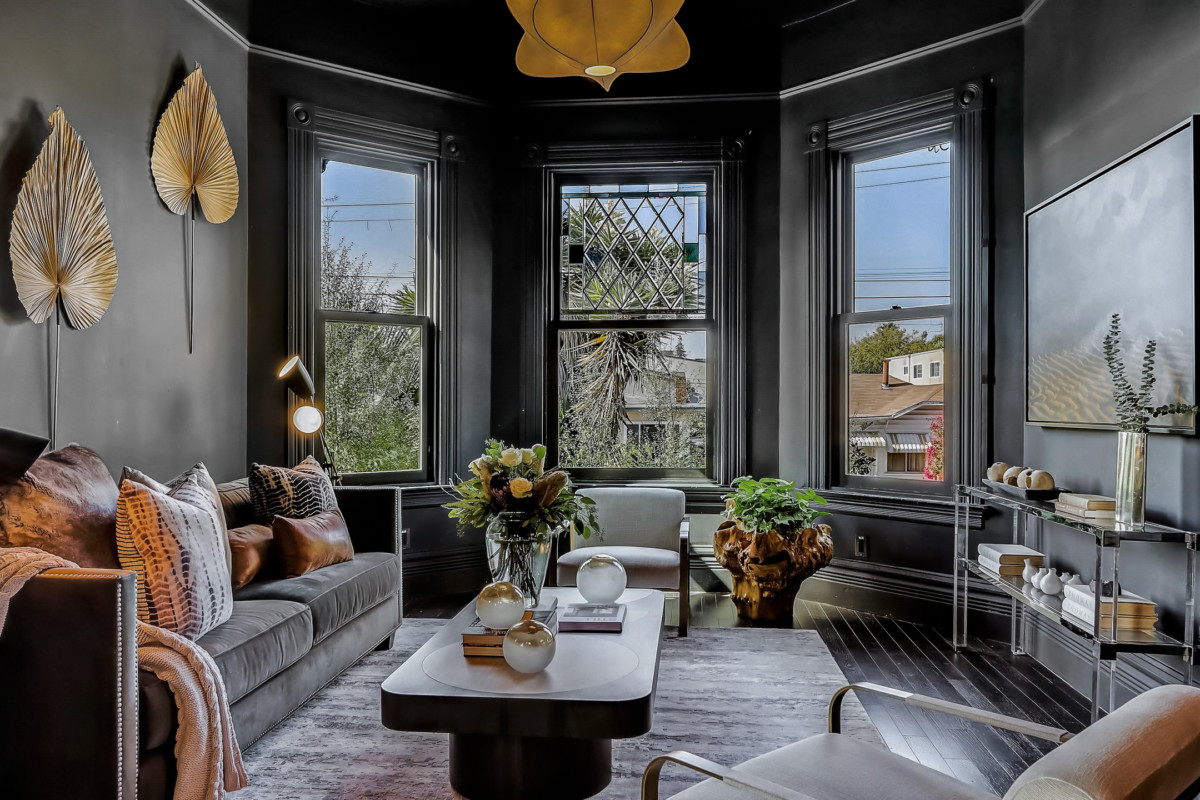
Victorian house interior features
As with the exterior, the interior of a Victorian house is equally as ornate and decorated. You’ll often find crown molding, window and door trim, and intricate staircases. Victorian homes are more formal, so there may be many “parlors” or living rooms, and typically feature a formal dining room. There may also be hidden nooks, balconies, and high ceilings, adding to the grandeur of a Victorian era home.
Victorian homes often feature sculptures as highlighted by The Ancient Home, a manufacturer of home décor and art. They note, “During the Victorian era reproductions of Greek and Roman sculptures became so trendy to the extent that if your home was void of statues, you were not considered an educated person. The high-quality aesthetic and fascinating history that marble statues bring to home interiors is just the style that the Victorians were so keen to show off. Look for small statues and busts well placed on mantelpieces and bookshelves, and display impressive life-size artwork where the space is generous to make your home distinctive and admirable.”
Harp Gallery, an antique and vintage furniture store in Appleton, WI, comments on the details found throughout homes, “Victorians loved intricate ornamentation, graceful shapes and rich patterns. Nostalgic, cozy, and warm antique touches like a lavishly framed painting, carved secretary desk or marble top table will brighten and charm living spaces today. Victorian period furniture adds a whimsical and eye-catching note to any room.”
Design tips for Victorian homes
If you’ve decided that a Victorian home is right for you, you may also be wondering how to highlight these homes’ unique features. We’ve consulted with experts for their best design tips when styling the interior, so read on to see what they had to say.
“After years of fascination with minimalism and MCM design, Victorian maximalism is making a comeback allowing homeowners and decorators alike more freedom in color and pattern play, as well as adding connections to nature in decor” states Katie Bye, a member of Black Rock Galleries’ estates team. They suggest incorporating colors associated with the era, as, “The Victorian design aesthetic is filled with bold, rich, sometimes “moody” colors. If you’re not ready to take the full plunge into the Victorian pool, stick to some neutral basics, but add color accents that pay homage to the Victorian era — deep blues, purples, reds, burgundy, greens.”
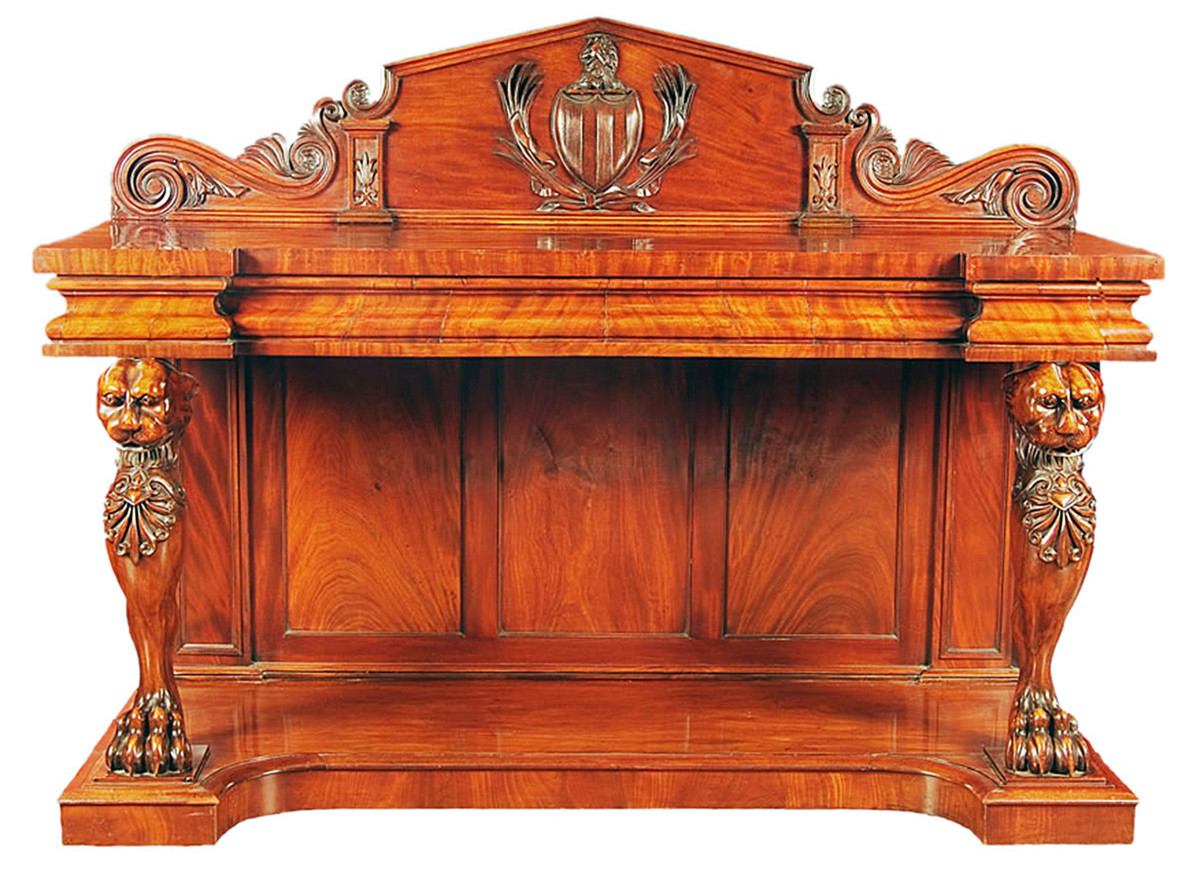
Chantal O’Sullivan of O’Sullivan Antiques urges homeowners to consider the authenticity of the décor they choose, claiming, “As a dealer of Irish and English furniture from the Georgian to the Victorian era, I feel the most important factors when adding Victorian style to an interior are the authenticity of the piece, the quality of the wood, and the condition of the carving. The Victorian period was known for its dramatic, larger-than-life carving, as in our mahogany serving table with pediment back and monopodium legs, and the best carving brings out the full richness and grain of the wood.”
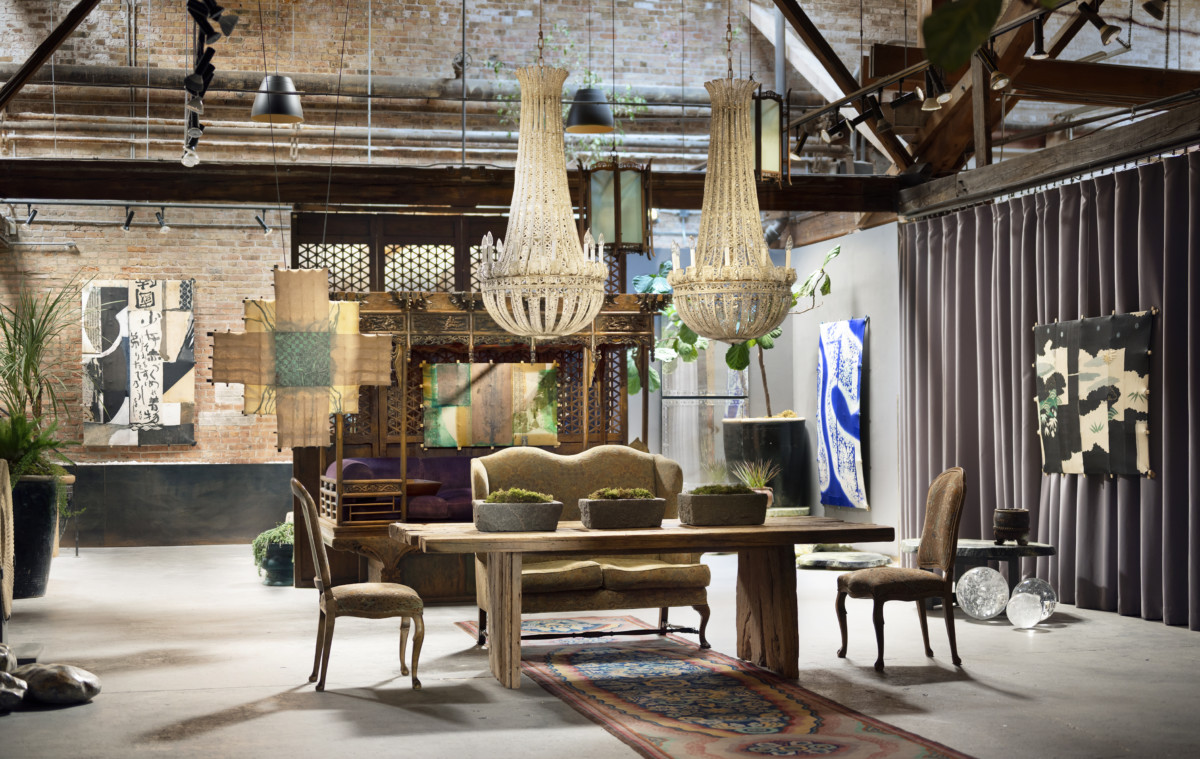
For Betsy Nathan of PAGODA RED, they make Victorian homes feel more modern through “rough luxe.” They continue, “For us, this means a bold statement, such as a pair of French Empire Crystal Chandeliers — layered with humble, wabi sabi texture, like a reclaimed Elmwood Table. Ornate lighting and details mixed with the austerity of something Ming or with a provincial texture make an environment feel collected and personal, with an unexpected, sophisticated twist.”
To incorporate Victorian style with a modern twist in your home, English Elm suggests, “Don’t go overboard with too many prints, patterns, and elaborate pieces of furniture. Mix and match more embellished or extravagant pieces with more subtle pieces. If you want just a touch of Victorian, choose smaller, simpler décor pieces like a vase to get that look.”
Don’t be afraid to embrace a little minimalism in your home, as advised by Zachary A, “With the exception of strict period homes, an excellent statement is a pop of current or minimalist design. It gives a sense of now, but also accentuates the ornate surrounding through contrast. It’s great for conversation starters.”
Types of Victorian architecture styles
Victorian homes have a staple look – ornate exteriors, reminiscent of a castle with large windows. Yet different architectural styles have influenced the look of Victorian homes, resulting in unique spins on the standard design. Let’s take a look at the most popular Victorian architecture styles.
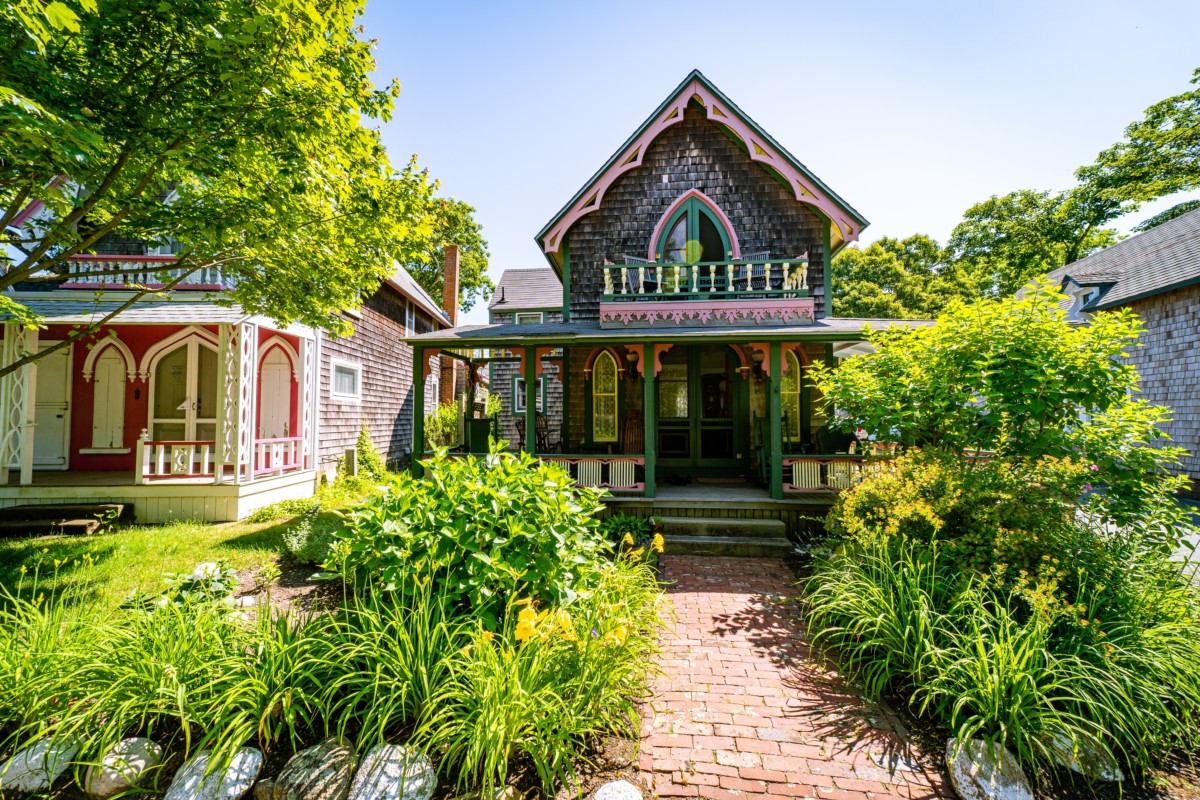
Gothic Revival Victorian house (1830-1860)
Gothic Revival style homes take inspiration from medieval European churches with their steeply pitched roofs and pointed arches. You can also find ornate woodworking details, turrets, and decorative columns or posts.
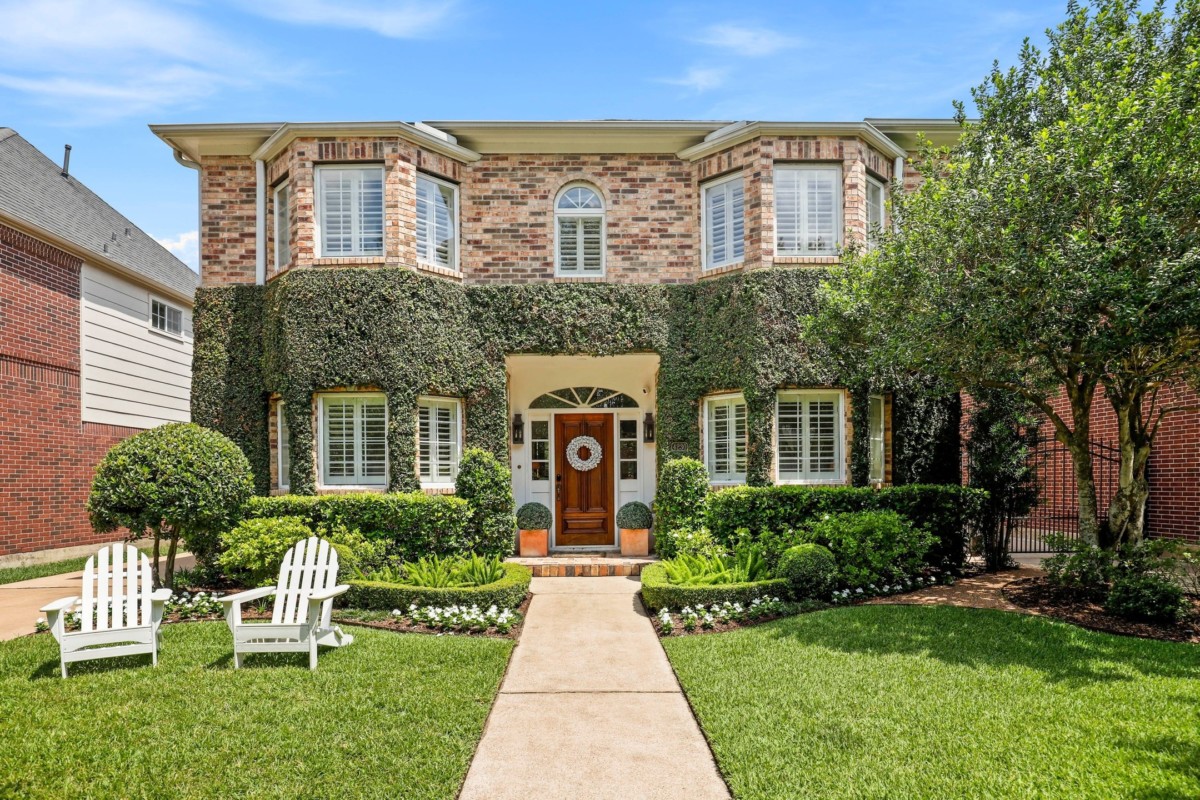
Italianate Victorian house (1840-1870)
Italianate style Victorian homes mirror the Italian villas they are modeled after. Typically only two stories, these homes also feature single-story porches, wide eaves, low roofs, and the characteristic ornamental brackets.
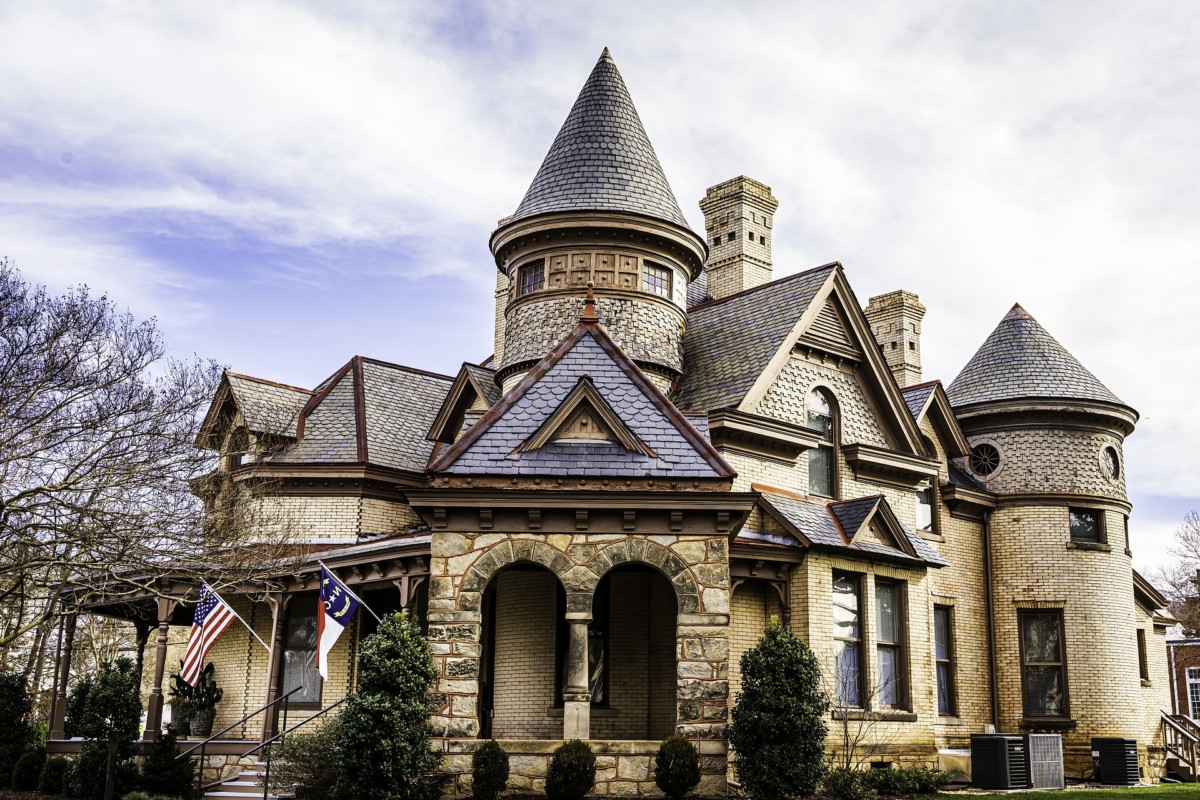
Romanesque Revival Victorian house (1840-1900)
Similar to Gothic Revival, Romanesque Revival Victorian homes take inspiration from European churches with their arches and turrets. Romanesque Revival style often features a brick exterior, intricate stone detailing, and a reddish color. Unlike many other types of Victorian architecture styles, Romanesque Revival homes don’t have that characteristic wood trim.
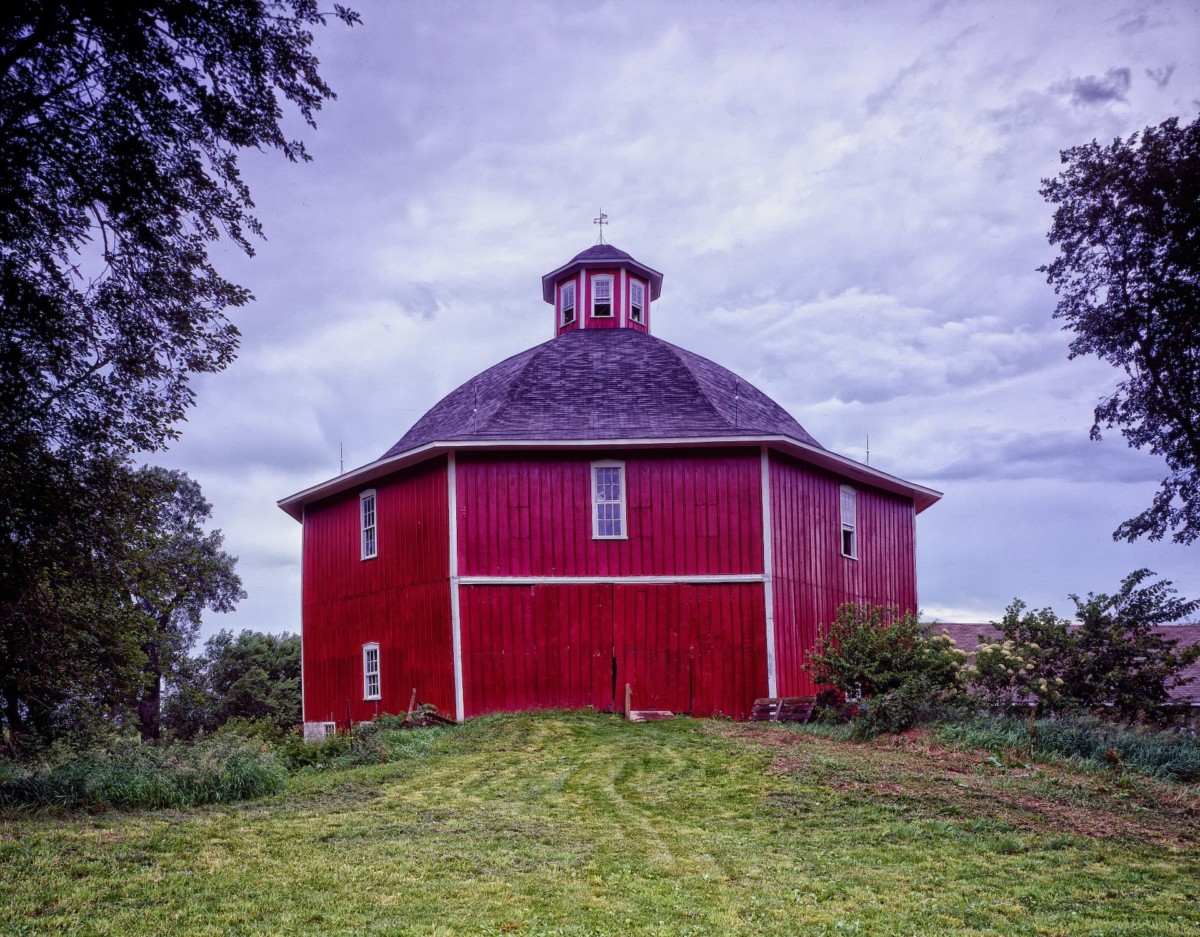
Octagon style Victorian house (1850-1870)
An eclectic take on the Victorian style home is the Octagon style. Appropriately named, the Octagon style home has eight sides, making homes feel airy and full of light. They often have low-pitched roofs, a domed shape, a cupola, and a spiral staircase in the middle of the home.
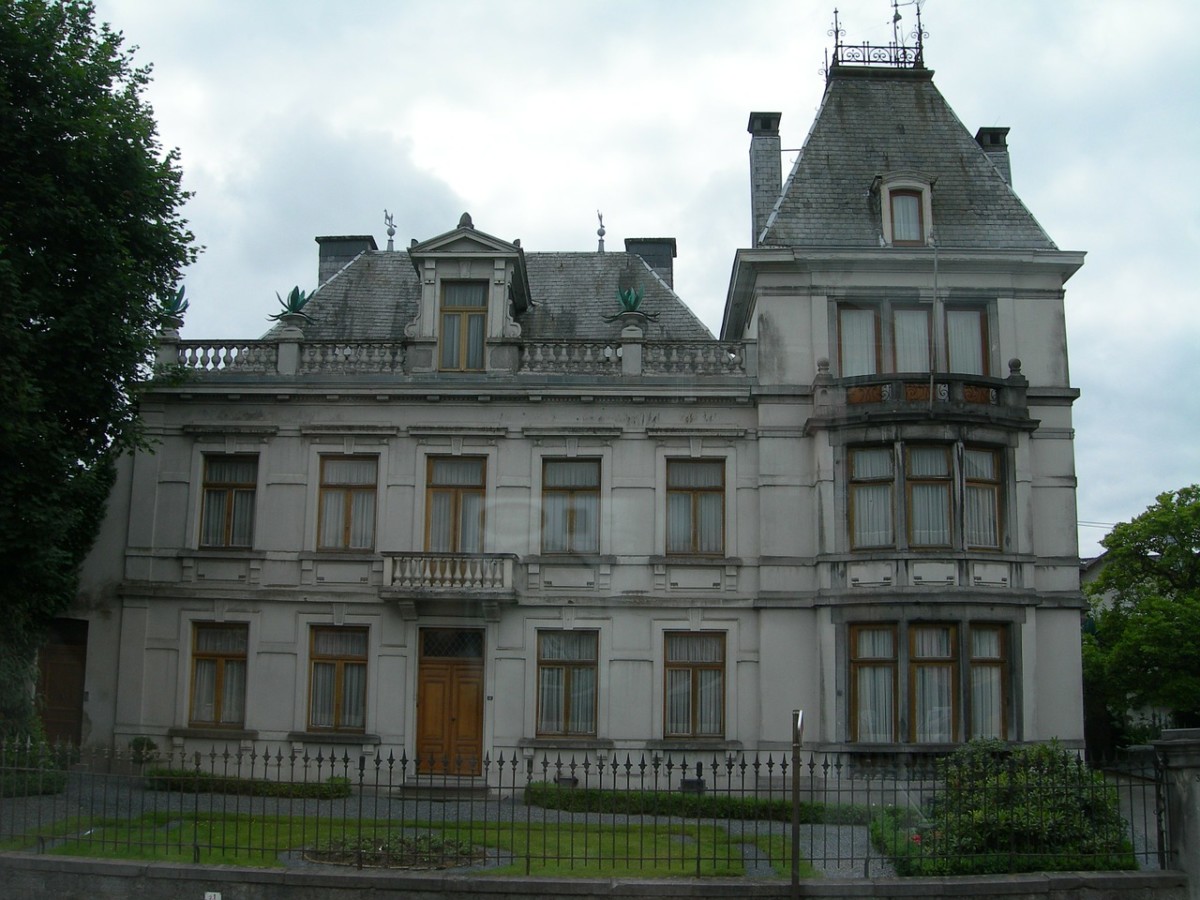
Second Empire Victorian house (1852-1870)
Originating in France, Second Empire Victorian homes are known for their Mansard roofs. Mansard roofs are a unique 4-sided gambrel roof, often featuring diamond-shaped dormer-style windows. Second Empire homes are also characterized by their square or rectangular base, attic space, and decorative millwork.
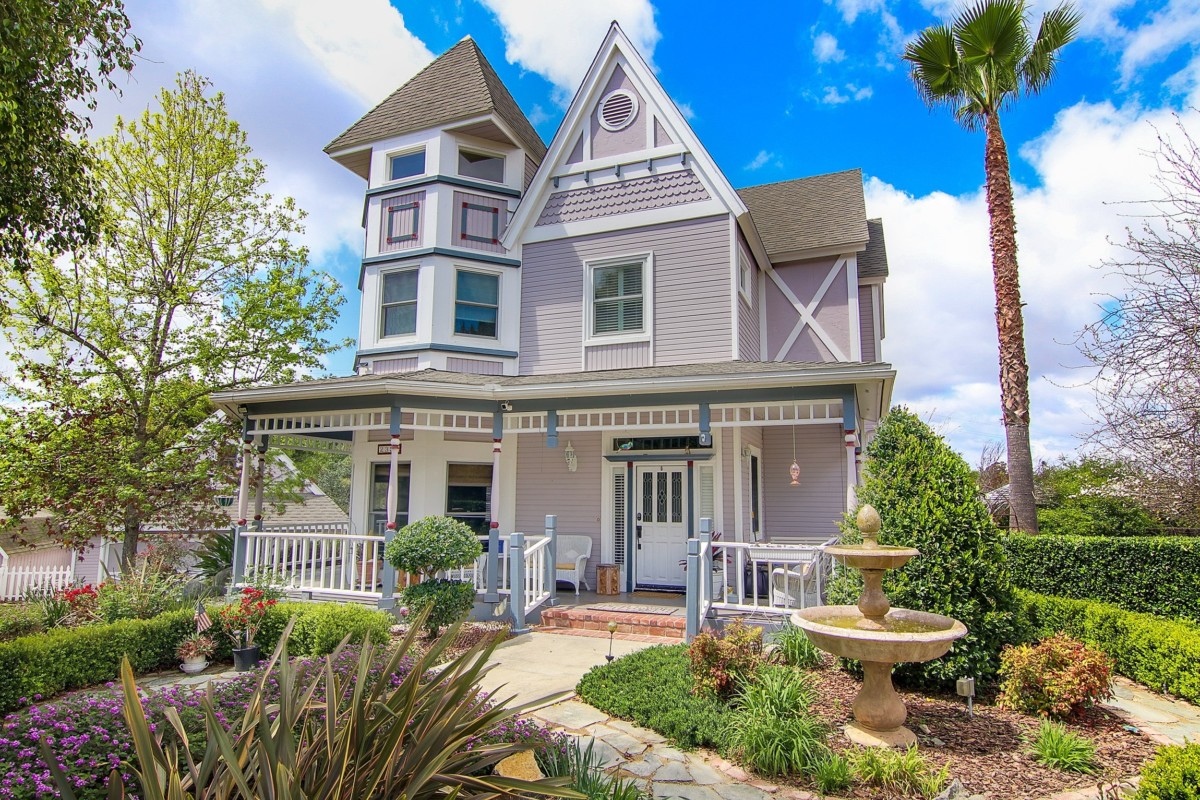
Stick-Eastlake Victorian house (1860-1890)
Stick-Eastlake homes, also just called Stick, share a resemblance to Tudor-style homes with their diagonal, horizontal, or vertical planks (called “stick work”) adorning the home’s exterior. Typically made with wood, Stick-Eastlake Victorian homes are also characterized by their pitched gable roofs, trusses, towers, and embellished trim. Unlike other Victorian style homes, Stick-Eastlake style may not have bay windows and as much intricate decoration.
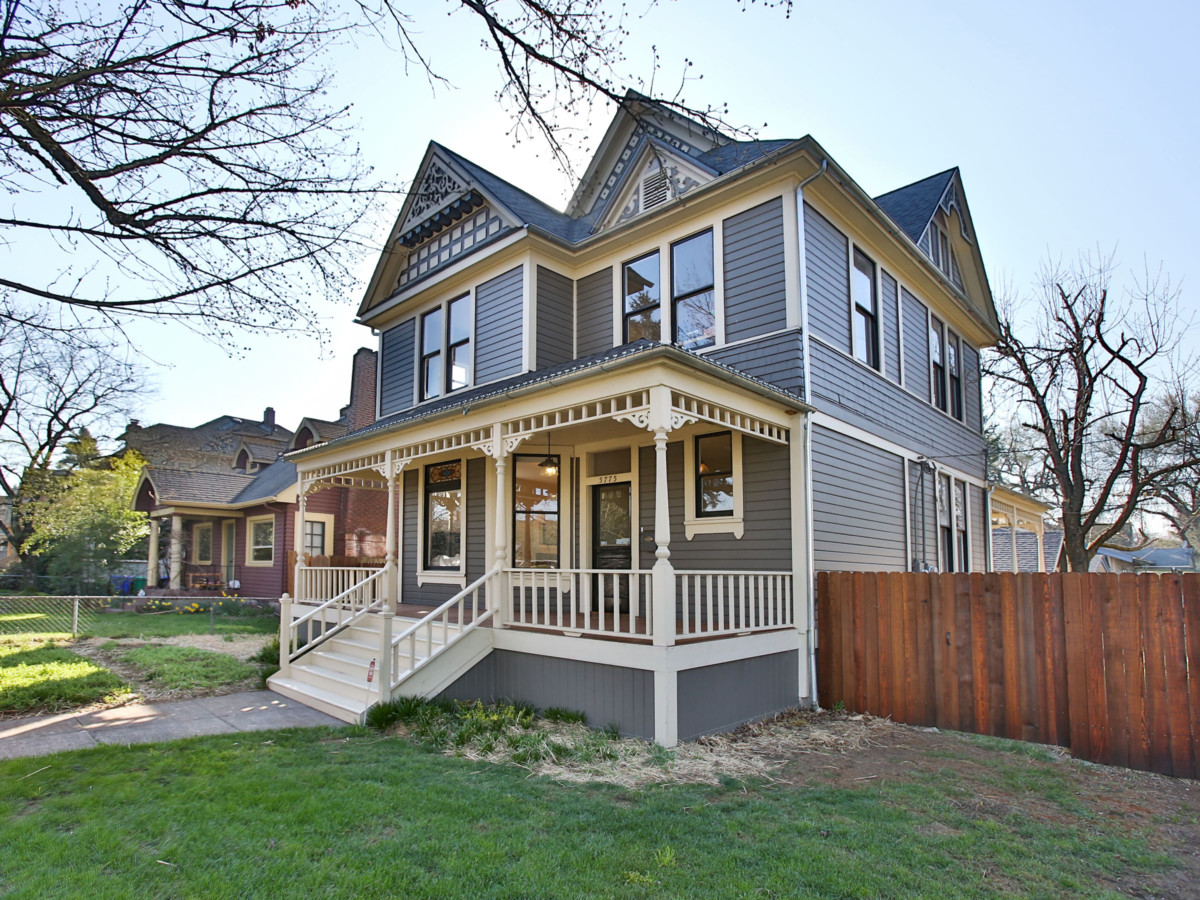
Folk Victorian house (1870-1910)
The most common type of Victorian style, the Folk Victorian house, is more simplistic in design. Characterized by their square look, classically detailed trims, gable roof, and front porch, Folk Victorian homes exude the spirit of the Victorian style without the grandeur.
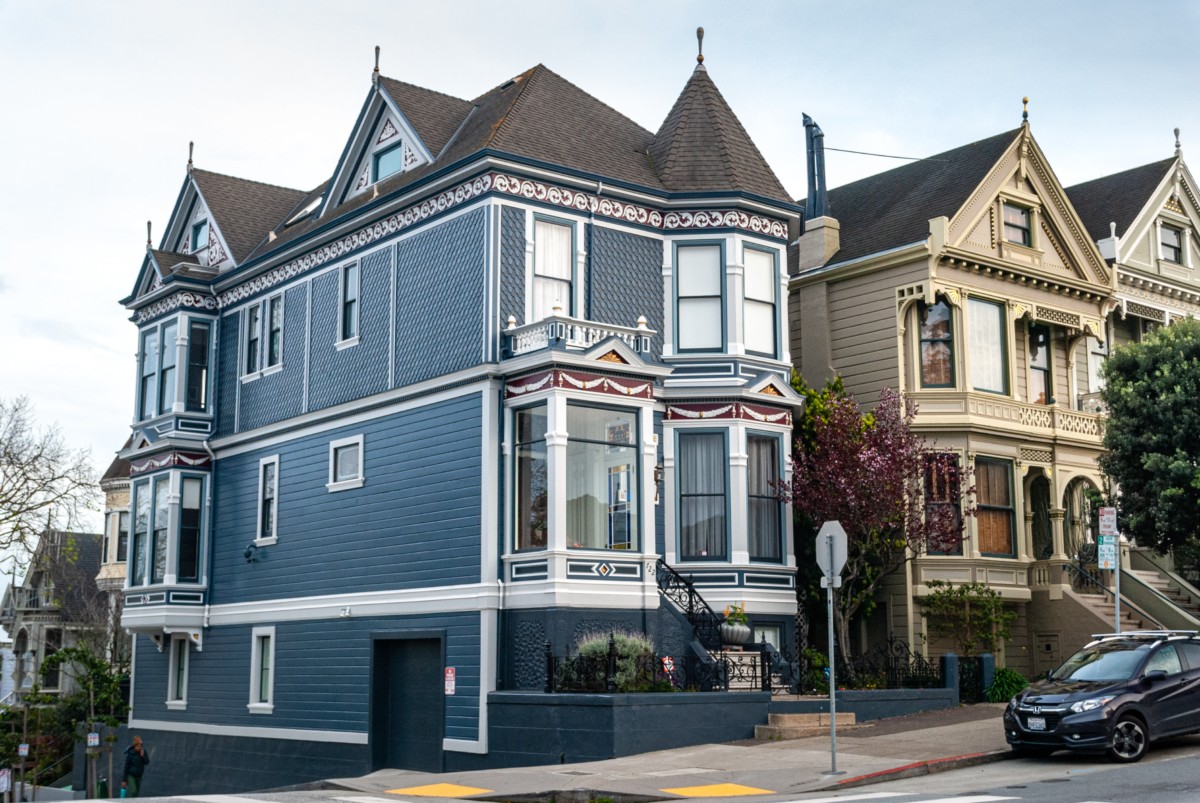
Queen Anne Victorian house (1875-1905)
Queen Anne Victorian homes are the most famous Victorian style architecture that comes to mind. Often more asymmetrical in design, Queen Anne style homes feature wrap-around porches, balconies, towers, bay windows, pitched roofs, highly ornate trim, and brightly painted exteriors.
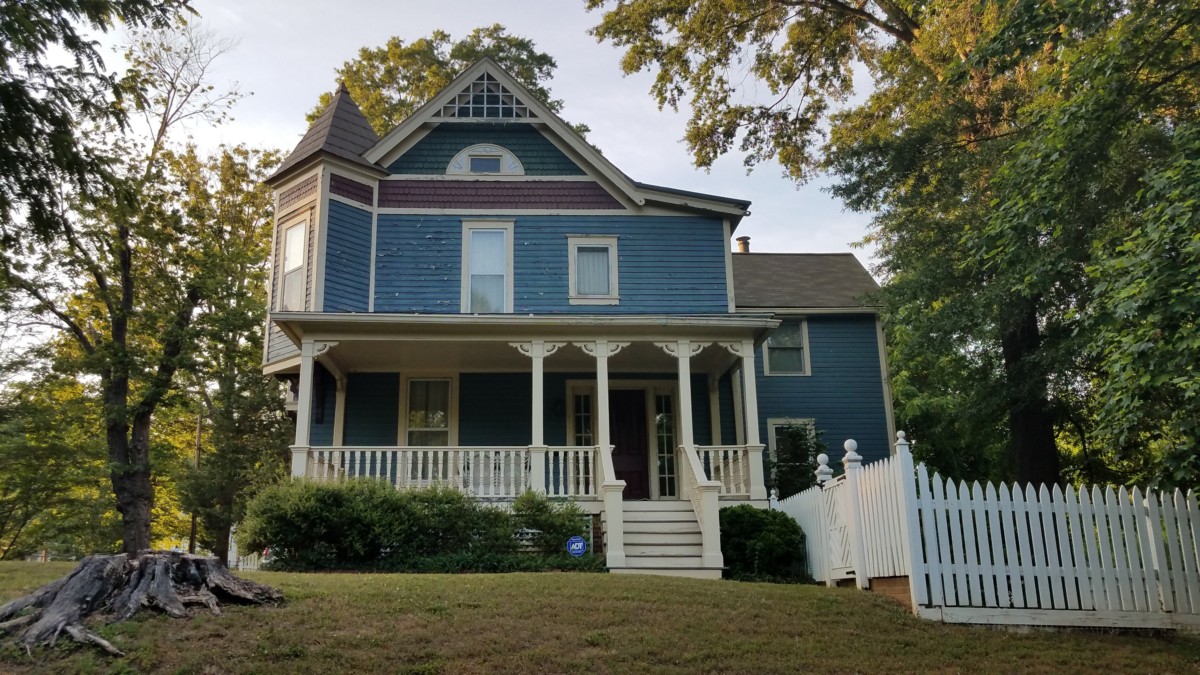
Shingle style Victorian house (1880-1900)
Rustic and simplistic in appearance, Shingle style Victorian homes often blend into their surroundings with their brick or clapboard facades. Popular in New England, Shingle style homes typically have round towers, sash windows, and large porches.
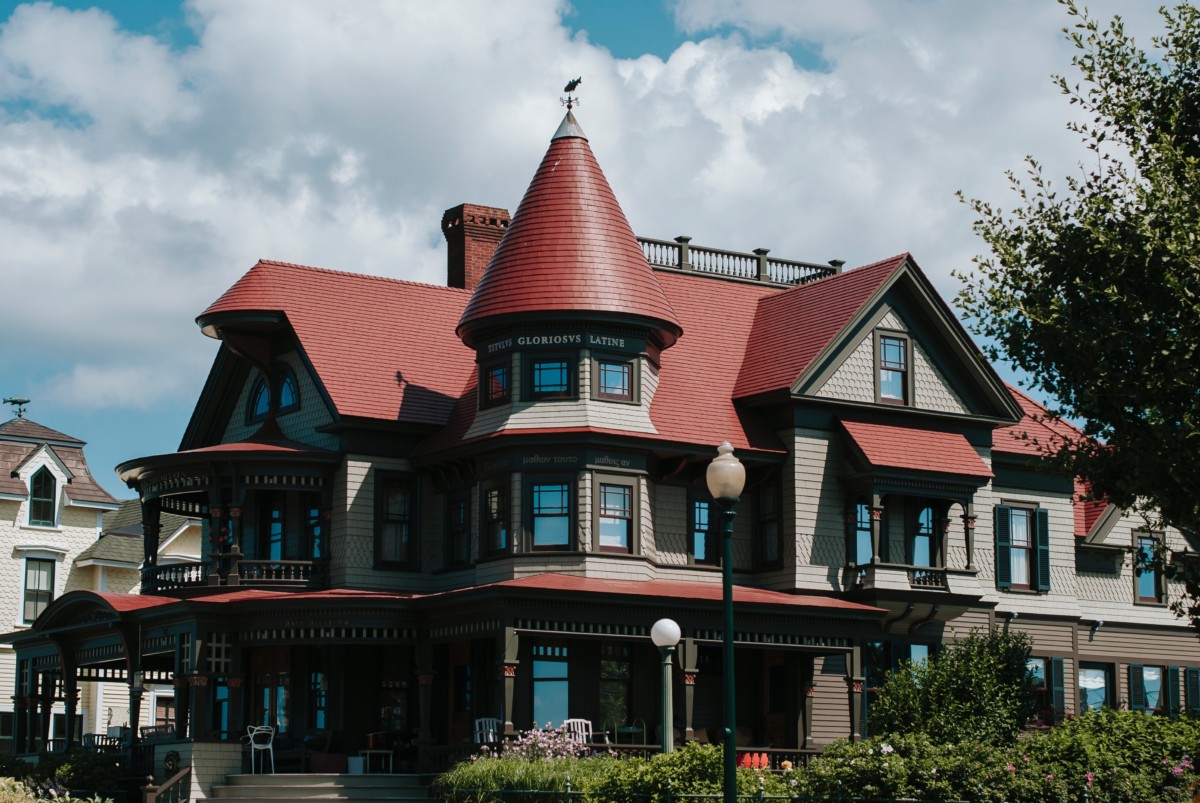
Richardsonian Romanesque Victorian house (1880-1900)
An offshoot of the Romanesque Revival Victorian style home, Richardsonian Romanesque is named after architect Henry Hobson Richardson. Richardson’s take on this home style features an eclectic design with large pillars, rounded arches, a brick façade, and medieval-looking towers.
Pros and cons of Victorian home styles
As with any house you decide to buy, there will undoubtedly be pros and cons. Maybe you’re not a fan of the low ceilings, but the natural lighting throughout the house makes up for it. Before making an offer on a Victorian home, check out some of the pros and cons of this style.
Pros of Victorian style homes
One of the main pros of owning a Victorian home is the charm. From the moment you see a Victorian house, it stands out from the rest with its gingerbread-house-like look and colorful paint. Victorian houses are full of history as most have been around for over a century, so you’ll be living in a home shared by many others before you. Architectural details are present throughout the home’s interior and exterior, so for those searching for a home filled with unique characteristics, a Victorian home may just be the right fit.
Cons of Victorian style homes
The biggest con of owning a Victorian home is the age. As with any historic home, you may encounter issues such as outdated electrical wiring, more frequent repairs, and even asbestos or lead paint found in the home. This can increase the cost of updates you may need to make, depending on the state of the home you purchase. Another con to consider is the size of many of the rooms. While Victorian homes tend to be larger, the bedrooms and closets tend to be smaller, which may be an issue for those looking for storage space.
How to find Victorian houses for sale in your area
If a Victorian house is the right style of home that you’re looking for, Redfin can help you find one in your city.
1. Go to Redfin.com and type into the Search Bar either the city’s name or the zip code, for example, San Francisco, CA where you’d like to begin looking for a house. Press enter.
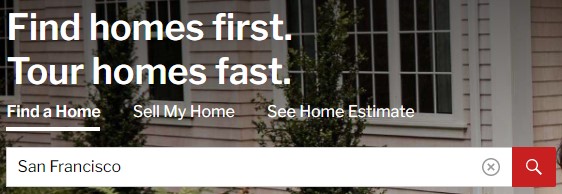
2. Near the top of the next page, on the left side, you will see “More Filters.” Click on that and scroll to the “Keywords” box near the bottom of the page.

3. Type the word “Victorian” into the Keywords box, and press Apply Filters. And that’s it! All Victorian style homes within the city name or zip code you entered will populate the page, and you’ll be able to begin your search.
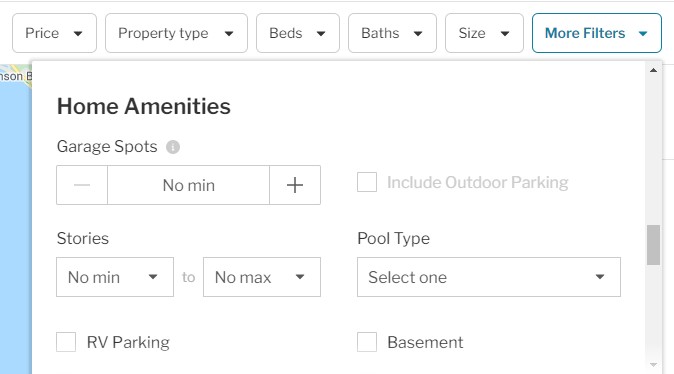
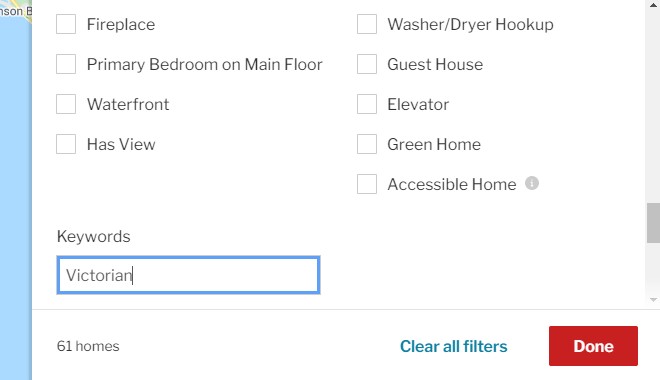






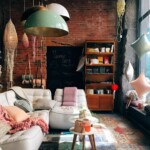

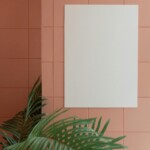



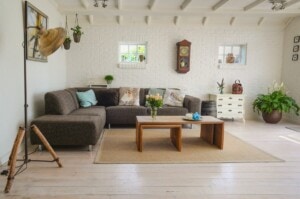
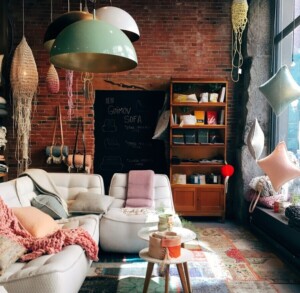






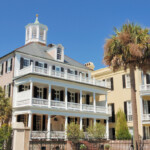






 United States
United States Canada
Canada